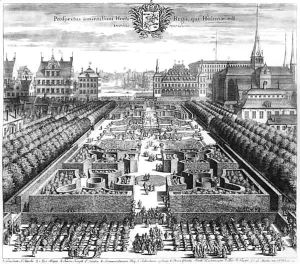Johannes Van den Aveele Paintings
Johannes van den Aveele was a Flemish engraver, born in 1655, likely in or near the city of Ghent in what is now Belgium. Although not as widely recognized as some of his contemporaries, van den Aveele was a proficient artist of the Baroque period, contributing significantly to the print culture of his time.
He apprenticed under the Ghent-based engraver Arnold de Jode, from whom he learned the craft of line engraving. After completing his apprenticeship, van den Aveele moved to Amsterdam in the Dutch Republic, which was then a major center for printmaking and publishing in Europe. His move was likely motivated by the thriving art market and the relative religious tolerance found in Amsterdam, which attracted many artists and intellectuals from across Europe during the 17th century.
In Amsterdam, van den Aveele established himself as an independent master engraver. He produced a wide range of works including portraits, decorative prints, maps, and book illustrations. His engravings often featured elaborate and intricate designs that captured the Baroque style's dynamism and attention to detail.
Van den Aveele's works were sometimes based on his own designs, but more frequently he translated the compositions of other artists into engravings. This was a common practice at the time, as engravings served to disseminate the works of painters to a broader audience. Through his engravings, van den Aveele contributed to the spread of Baroque aesthetics throughout Europe.
Despite his active role in the art world of his time, van den Aveele did not achieve the same level of fame as some of his contemporaries. However, his works do provide valuable insights into the artistic exchanges and print culture of the Baroque period. Johannes van den Aveele passed away in 1727, leaving behind a body of work that continues to be studied for its craftsmanship and historical significance within the context of European art history.
